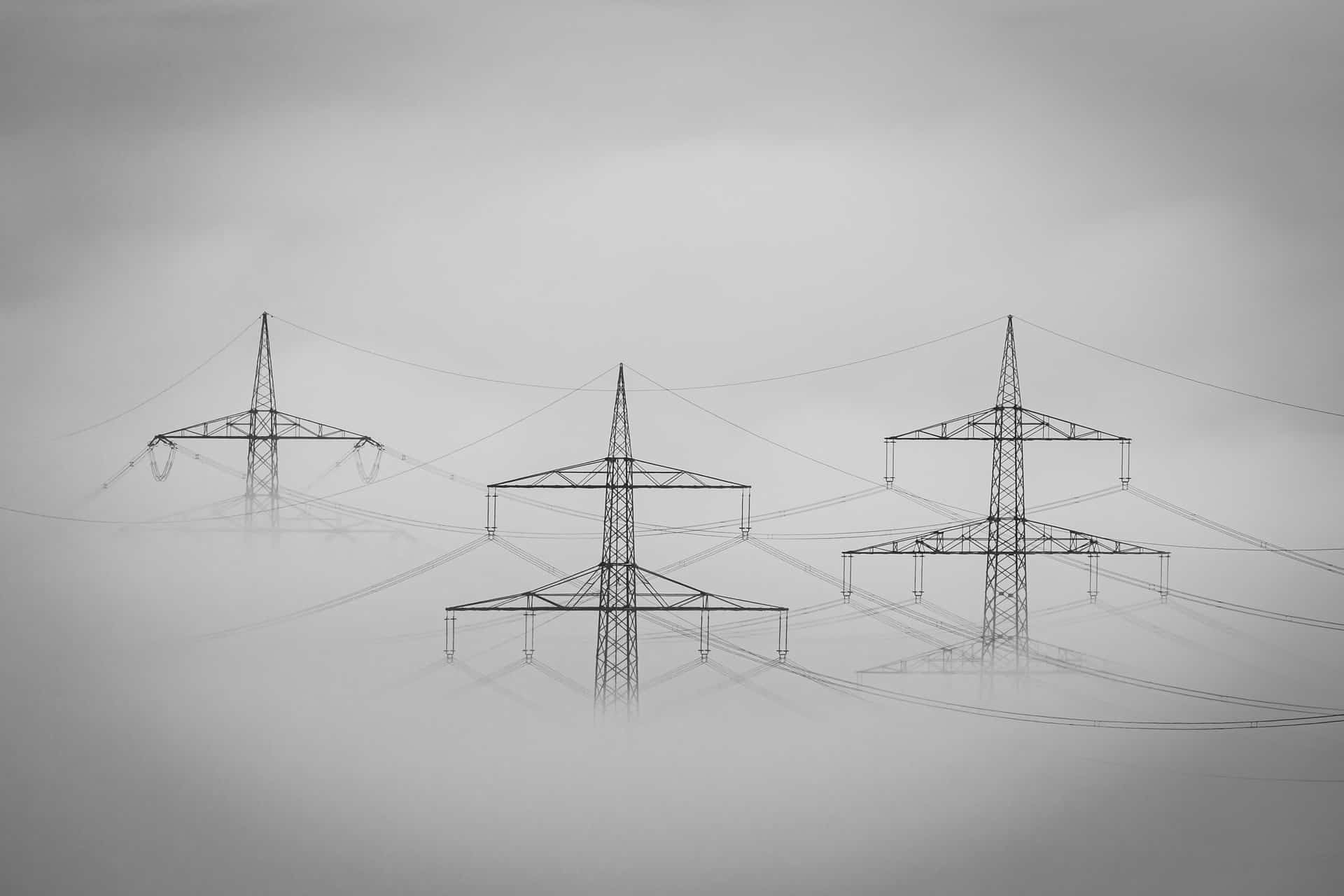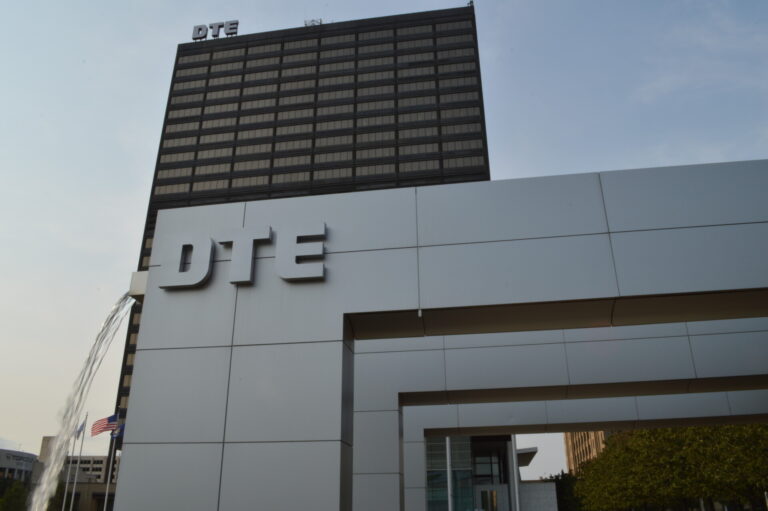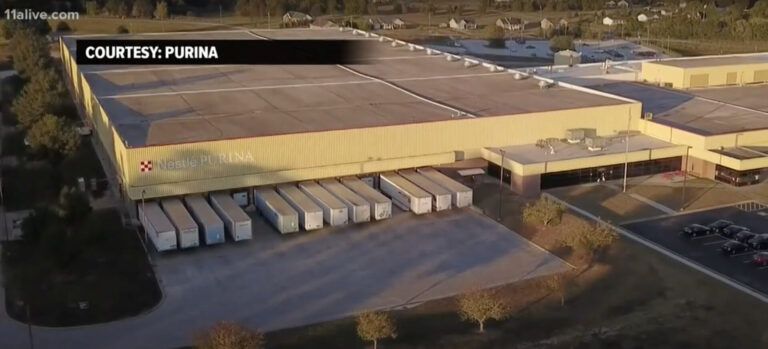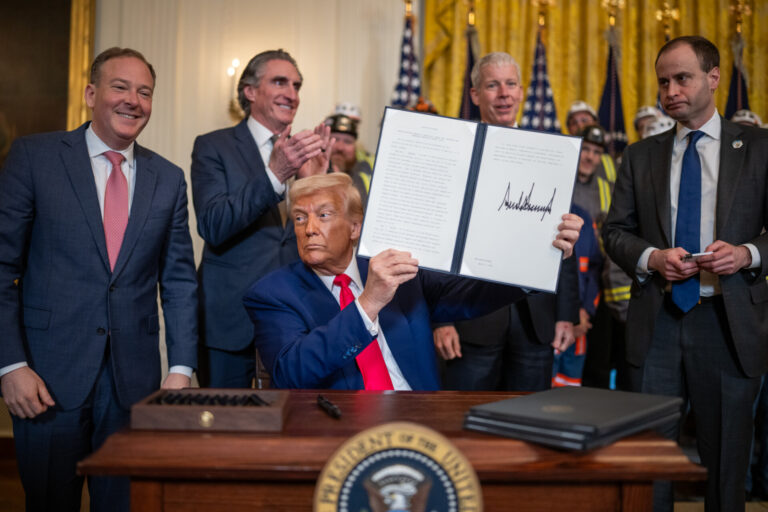Southeastern Utilities Block Transmission Necessary for Decarbonization

Decarbonizing the economy will require a significant expansion of interstate and interregional transmission, but investor-owned utilities in the South, such as Southern Company and Entergy, have spent years undermining efforts to expand high-voltage transmission in an effort to entrench their monopolies, preserve the value of their existing fossil fuel assets, and limit the introduction of lower-cost renewable energy from outside their service territories.
Expanded high-voltage transmission is crucial to increasing the flexibility and reliability of the grid by expanding the geographic footprint and the potential resources available for grid operators. The Department of Energy’s 2023 Transmission Needs Study noted, “nearly all regions in the United States would gain improved reliability and resilience from additional transmission investments.” The study said that the territory covered by Southern Company and Entergy are among the regions that have constructed the “fewest circuit-miles [of transmission], relative to regional load,” over the past decade.
Southern Company has routinely filed comments with federal agencies opposing national standards or rulemakings designed to increase transmission, and has questioned federal regulators’ legal authority to regulate its transmission activities.
Entergy has stalled transmission growth for years, going so far as to hire an undercover consultant under the guise of a “customer” in an attempt to manipulate its wholesale market’s transmission planning process; the utility closely coordinated with the Mississippi Public Service Commission to align their public positions. Entergy was subject to a U.S. Department of Justice (DOJ) investigation in 2012 that forced it to join a regional market, the Midcontinent Independent System Operator (MISO).
Officials with the North American Electric Reliability Corporation (NERC), which is responsible for setting reliability standards for the bulk power grid, have lamented the role of incumbents in blocking transmission construction. Mark Lauby, NERC’s Senior Vice President and Chief Engineer, while speaking on a conference panel that was published by the Public Power Underground podcast in late 2023, said some generators, like utilities, gain from congestion and want problems in the system to remain. Lauby told attendees, “How do I get a line through multiple markets when markets themselves don’t want to compete with other markets. So we have some substantial challenges within markets within generators that are trying to stop the building of transmission. It’s not just permitting but it’s also those folks that feel that they actually get gain out of congestion, out of having that stinking solar stuff way a ways away so they can make more money locally.”
Southern Company’s opposition to transmission expansion
In an attempt to break the transmission logjam, the Federal Energy Regulatory Commission (FERC) issued a Notice of Proposed Rulemaking (NOPR) titled “Building for the Future Through Electric Regional Transmission Planning and Cost Allocation and Generator Interconnection” in April 2022. FERC sought comment on reforms related to three specific areas: (1) reforms for longer-term regional transmission planning and cost-allocation processes that consider anticipated future generation, (2) rethinking cost responsibility for regional transmission facilities and interconnection-related network upgrades, and (3) enhanced oversight of how new transmission facilities are identified and paid for.
Southern Company, through its law firm Balch and Bingham, submitted comments to FERC documenting a litany of concerns and implying that almost any requirements from federal regulators would risk litigation. Southern told FERC that transmission cannot provide benefits on its own, argued that federal regulators should not require it to study any transmission benefits, and said that doing so would infringe on state’s rights. Clean energy advocates noted that, “although well-intentioned, this experiment in regional deference has produced paltry results in the Southeast” and that “no non-RTO/ISO region’s planning process has ever resulted in a transmission facility selected for cost allocation.”
Southern has routinely refused to study the benefits of transmission. When Alabama Power asked the Alabama Public Service Commission for permission to buy a gas plant, the company reviewed only the costs of transmission, but not any potential benefits.
Southern has faced tough questioning from the Georgia Public Service Commission Staff about its failure to proactively plan transmission to assist with the closure of coal plants in the state. Requests by clean energy advocates to study the issue via the Southeast Regional Transmission Planning (SERTP) process, which is self-run entirely by the Southeastern utilities, were rebuffed by SERTP. Georgia Power later admitted to state regulators that SERTP’s process limited its ability to plan ahead, and the utility claimed it did not have the software or models to study economic congestion on the transmission system.
But Southern told FERC a different story, saying that because no transmission project has ever been selected by SERTP, “no such more efficient or cost-effective regional solutions” exist, and that SERTP’s failure to select transmission “validates the robustness and thoroughness” of its planning process. The Southern Renewable Energy Association (SREA), which represents renewable energy developers in the South, noted the apparent contradiction in Southern’s position in SREA’s own reply comments to FERC.
In comments to the U.S. Department of Energy’s (DOE) National Transmission Needs Study, Southern claimed that transmission congestion could not be calculated in the Southeast, unlike in parts of the country that have a regional transmission organization (RTO). Southern told DOE it opposed any federal designation of a National Interest Electric Transmission Corridor and opposed DOE even studying projects. To do so, Southern warned, could be illegal. Southern also claimed that “economic” and “public policy” congestion was not relevant to non-RTO utilities like Southern. However, some utilities in the non-RTO Southeast, such as Duke Energy, are subject to legally binding public policy passed by their state lawmakers.
Southern Company’s anti-transmission advocacy is backed by massive expenditures on lobbying and campaign contributions. The company has long been one of the largest spenders on lobbying among utilities. Southern reported spending $191 million in activities related to political influence from 2015 through 2020 in annual filings to FERC, far more than any utility other than NextEra during that time, according to data aggregated by the Energy and Policy Institute (EPI). In the last ten years, Southern Company has spent more than $112.4 million on lobbying at the federal level, according to Open Secrets. Southern has never employed fewer than 49 lobbyists in a year over the last decade. In comparison, Southern could build enough transmission to support moving 1,600 megawatts of power from the Tennessee Valley Authority (TVA) to North Georgia for less than $57 million or 1,600 megawatts from South Georgia to North Georgia for less than $96 million, according to data released by SERTP.

Figure 1. Southern Company’s Lobbying Spending by Year, Source: Open Secrets
Entergy’s opposition to transmission expansion
Southern Spirit
Southern Spirit is the name of a proposed high voltage direct current (HVDC) transmission line which, if completed, would connect the Texas grid to the rest of the grid in the Southeast US, and would be capable of transmitting up to 3,000 megawatts of power. As planned, the line would originate in Texas, traverse Louisiana, and terminate in Mississippi. The project was first submitted to federal regulators in 2011.
Entergy, in filings with the Mississippi Public Service Commission, is attempting to derail the Southern Spirit project, claiming that the transmission line could compete with some of its existing gas-fired power plants.
Meanwhile, Amazon Web Services’ new data centers in Mississippi will require more than 1,000 MW of new power from Entergy. Entergy has worked with Amazon for “years” to attract the tech firm to Mississippi. The Mississippi Legislature granted Entergy broad exemptions from state and local regulatory oversight, including an exemption from competitive procurement, to charge ratepayers for new infrastructure to serve the Amazon facilities.
After a brush with the Department of Justice for anti-competitive practices in 2012, Entergy’s grid is managed by MISO, which has the final say about which transmission projects get built on its system. MISO, for its part, was unconcerned about the costs or ability of Southern Spirit’s developers to pay for system upgrades as planned.
Half of the energy from Southern Spirit is proposed to be delivered to Entergy, with the other half delivered to Southern Company. An analysis conducted by Energy Systems Integration Group projected that Southern Spirit would save Southern Company and ERCOT more than $150 million, which may signal why Entergy is unsupportive of the project. If the project were not built, those savings would not occur, with the money instead being paid by customers to Entergy.
Blocking competitive transmission projects, evading the purview of MISO
In 2018, MISO awarded NextEra a 500-kilovolt (kV) transmission project from Hartburg to Sabine on the Texas side of the Texas-Louisiana border. In 2019, the Texas legislature passed a right of first refusal law (ROFR), over the objections of the U.S. Department of Justice, that allowed Entergy to claim ownership of the previously awarded NextEra line. (The federal Fifth Circuit Court of Appeals declared the ROFR law unconstitutional in 2022, and the Supreme Court declined to take up Texas’ further appeal.)
But rather than build the transmission line, Entergy instead issued a request for proposals (RFP) to build a power plant in the same general area, which had the effect of reducing the economic benefits of the line. Entergy won its own RFP, deciding to build a 1.2 gigawatt combined cycle gas-fired power plant at Orange County.
Entergy has also evaded the purview of MISO by opting to build large “local” or “bottom up” transmission projects and asking for “expedited review”. Local transmission projects are submitted to MISO by the utility, whereas regional projects are developed independently by MISO. Local transmission projects can diminish, or even eliminate, the economic benefits of regional transmission projects, such as the previously planned 230-kV Waterford-to-Churchill transmission line near New Orleans. In that case, MISO Senior Manager of Expansion Planning Edin Habibovic told RTO Insider in August 2020 that Entergy built new projects in the area that eased congestion and eroded the Waterford-to-Churchill project’s benefits.
In the last two years, Entergy has requested expedited review for local transmission projects from MISO representing projects costing more than $540 million in order to enable 1.1 gigawatts of new load. MISO data shows that the vast majority of transmission projects approved are local projects and that Entergy’s (MISO South) transmission development is drastically different from its counterparts throughout the rest of MISO. Local projects do not provide the same grid-scale benefits of resilience and renewable energy integration as higher-voltage, geographically broader projects.

Figure 2. MISO Transmission Approvals by Category, Source: MISO

Figure 3. MISO Transmission Investment by Facility Type and Region, Source: MISO
As it currently stands, Entergy’s service territory remains largely an island to the rest of MISO, known as MISO North. The limited tie between Entergy’s territory, known as MISO South, and MISO North restricts lower cost, mostly wind, power from traveling from North to South. Such a restriction raises prices in MISO and benefits power plants operated by Entergy, and leads to billions in extra costs for consumers annually, according to a January 2024 working paper titled, “Power Flows: Transmission Lines and Corporate Profits” by Catherine Hausman. Hausman’s paper analyzed two major markets in the U.S., the Southwest Power Pool and MISO. She found that if Entergy’s system were better integrated with its neighbors and other grids, the utility’s 2022 operating profits would have been reduced by $930 million.
Coordination with regulators and undercover consultants
Previous reporting by EPI revealed Entergy’s close coordination with consultants to the Mississippi PSC to align their respective positions at MISO. Mississippi’s consultants make millions of dollars per year and some of them are paid hundreds of dollars per hour, all at the expense of ratepayers. The coordination worked to Entergy’s benefit, as the Mississippi and Louisiana PSCs filed comments opposing key elements of MISO transmission planning process.
The City of New Orleans, which acts as a separate regulator of Entergy’s New Orleans utility, initially sided with Entergy as well, but later reversed course to support MISO’s transmission planning process. MISO’s transmission planning process has led to some successful transmission planning in the northern part of its territory when, in 2022, the RTO’s board approved a $10.3 billion dollar plan that would enable approximately 53 gigawatts of renewable power to integrate to the grid.
EPI previously reported about Entergy’s use of an undercover consultant, former Entergy executive Dave Harlan, who posed as a “customer” at MISO meetings. MISO later changed its rules to require consultants to disclose whom they represent when attending or speaking at meetings. The Mississippi PSC directed its staff and representatives to, “not engage in any dialogue, formal or informal, related to public policy or any other matter within the Commission’s jurisdiction, with any stakeholder or other participant who declines to publicly disclose who he or she represents.”
Entergy was supposed to divest its transmission system to ITC Holdings more than a decade ago in order to satisfy the demands of federal prosecutors who accused the utility of anti-competitive practices. The DOJ said that “Entergy’s commitments to obtain membership in an [regional transmission organization] RTO and divest its transmission system […] will address the Antitrust Division’s concerns by eliminating Entergy’s ability to maintain barriers to wholesale power markets, ensuring that all Entergy service area generation is dispatched independently and at lowest cost, increasing market transparency and oversight, and properly aligning incentives for the construction of transmission.” Former FERC Commissioner John Norris recently noted that it is “unacceptable” for transmission to be “held hostage” by “anti-competitive” behavior in MISO South. Norris was one of the FERC regulators to approve Entergy’s entry into MISO more than a decade ago.
Southeastern Energy Exchange Market’s Poor Performance
The Southeast Energy Exchange Market (SEEM) was proposed and created by the region’s major utilities, most of which are members, including Southern Company, Duke Energy, Dominion and TVA, among others. Utilities claimed SEEM would provide the benefits of a wholesale power market without the costs and bureaucracy. The utilities also said that SEEM would help bring more renewable energy online, but the platform does not report on the energy mix of its trades, and independent power producers, such as large solar facilities, are ineligible to participate. SEEM does not conduct any transmission planning functions. Even Entergy, which as a MISO member is not a member of SEEM, said that “whatever benefits SEEM might entail, it is not an RTO or ISO and, as proposed, would not provide any transmission, resource or reliability function that MISO currently provides.”
Filings posted on the SEEM website largely show a platform failing to live up to its members’ promises. A November 2023 Utility Dive op-ed from Nick Guidi of the Southern Environmental Law Center and Chris Carmody of the Carolinas Clean Energy Business Association which analyzed SEEM data showed that SEEM had “realized only $3.3 million in total benefits” and “just a small fraction of its bids and offers create matches,” meaning few benefits accrue to members. Given the original start-up costs and ongoing operational costs, it is unclear that SEEM has yet to save its members any money. SEEM originally promised total benefits of $37 to $46 million dollars in its first year.
In July 2023, SEEM was struck down by a federal court which said that SEEM may violate FERC requirements that transmission owners provide open access to their systems. At issue was SEEM’s exclusion of 65 existing non-utility participants and discriminatory practices. New participants and certain types of resources, such as demand response and distributed energy like rooftop solar, are prohibited from participating. In its ruling, the D.C. Circuit Court said that “The creation of a new service that — by its design — excludes existing market participants evokes the discriminatory practices against third-party competitors by monopoly utilities that prompted the commission’s adoption of Order No. 888.”
SEEM data also shows a marked decline in activity during extreme weather events, like Winter Storm Elliott, which forced SEEM members TVA, Duke, Dominion, and Santee Cooper to curtail power to its customers. Georgia Power, under questioning in July 2022 and again in January 2024, admitted that the utility would not model SEEM as part of its regular integrated resource planning and it would not improve reliability or expand transmission.
BIG WIRES Act
In September of last year, U.S. Senator John Hickenlooper (D-CO) and U.S. Representative Scott Peters (D-CA) introduced the Building Integrated Grids With Inter-Regional Energy Supply (BIG WIRES) Act. The Act would require the country’s regional grids to have the ability to transfer approximately 30% of their peak load capability to neighboring grids in order to “fortify the critical energy infrastructure of the United States while lowering the cost of living for families.” The Electric Reliability Council of Texas – commonly known as ERCOT – would be exempt.
The bill has not moved since its introduction, and both Southern Company and Entergy have registered to lobby on the bill, according to federal lobbying disclosures. The bill awaits a hearing in the Senate Energy and Natural Resources Committee.
Header image source: Pixabay



